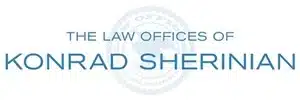When an inventor, author, business or creative professional produce an original work, they create something known in legal parlance as “intellectual property.” These properties can be copyrights, patents, trademarks, trade dress or service marks. The purpose of intellectual property is to secure for those inventors, authors and artists a monopoly right, and/or an exclusive right to exploit their works for a limited time. The purpose of this grant of exclusive commercial rights is to encourage the advancement of “science and the useful arts.”
The Constitution
Congress has the authority to establish laws granting copyrights, patents, and other kinds of intellectual property rights. So important was this power to the framers of the constitution that they made certain it was established under Article I of the Constitution of the United States as one of the enumerated powers of Congress. Here is the general breakdown:
- Intellectual properties are established and managed by the federal government in the United States.
- Copyrights are generally overseen by the Library of Congress
- Patents, trademarks, and to a lesser extent service marks are managed by the United States Patent and Trademark Office.
Copyright
Under the United States Copyright Act of 1976, a copyright comes into being the moment an individual fixes or causes an original work to be fixed in a tangible form. This act establishes what is colloquially known as a “common law” copyright, which entitles the author or artist a minimal set of protections consistent with the Berne Convention of 1886.
A copyright may then be registered with the Library of Congress, which strengthens protections and attaches the right to seek statutory damages in the event of an infringement. There are many kinds of original works that qualify for copyright, including most books, songs, dances, sculptures, art, animation, film and photographs. Each of these kinds of works are produced by fixing the work in a tangible form so it can be conveyed to others and sold as a product.
Exceptions to Copyright
One common misconception is that ideas themselves have protection under copyright law. Ideas themselves are not proprietary and for the most part, they cannot be protected by copyright. Once fixed onto a page, canvas, or digital media, however, the idea’s fixed form can be copyrighted. To further clarify:
- Some books and works of nonfiction are also ineligible for copyright protection.
- Facts, for example, cannot themselves be copyrighted. A collection of facts, however, like a dictionary or an encyclopedia can be copyrighted as a collected work.
- Works of the federal government are also exempt from copyright protection as a matter of law.
Patents
A patent is an exclusive right granted by Congress to exploit an invention. Patents are generally more complex to seek than copyrights, mainly because the invention must be demonstrated to the U.S. Patent and Trademark Office as patentable and as a unique and original work. Unlike copyrights, patents may be denied on the grounds they are insufficiently novel or unique. The patent may also be denied on the basis of “prior art” or another invention similar enough that it can serve as evidence the newer work is neither original nor unique.
- The process of obtaining a patent is far more complex and expensive than that for obtaining a copyright.
- Patents also have a more limited term of 20 years as opposed to the current copyright term of life of the author plus 70 years.
Trademarks
When a company seeks to label its products or services such that they stand out in the marketplace, they can establish something called a “trademark.” This is a word, phrase, or illustration that must be both unique and qualify under the rules of the Patent and Trademark Office as a work that can serve as a way to identify a commercial product.
Trademarks, like patents, must be unique and must undergo a more rigorous process for registration.
- Although a common law trademark can be established by its first use in commerce, a federally registered trademark is the only kind of work that qualifies to appear alongside the ubiquitous “circle R” symbol signifying a registered trademark that has nationwide protection.
Intellectual property is one of the most complex and extensive legal subjects that one can study. As always, it is highly recommended that anyone seeking to make use of intellectual property or to conduct business involving copyrights, patents, or trademarks consult a qualified business attorney Sacramento trusts as soon as possible to protect their rights.
Thanks to our friends and contributors from Yee Law Group for their insight into intellectual property.
